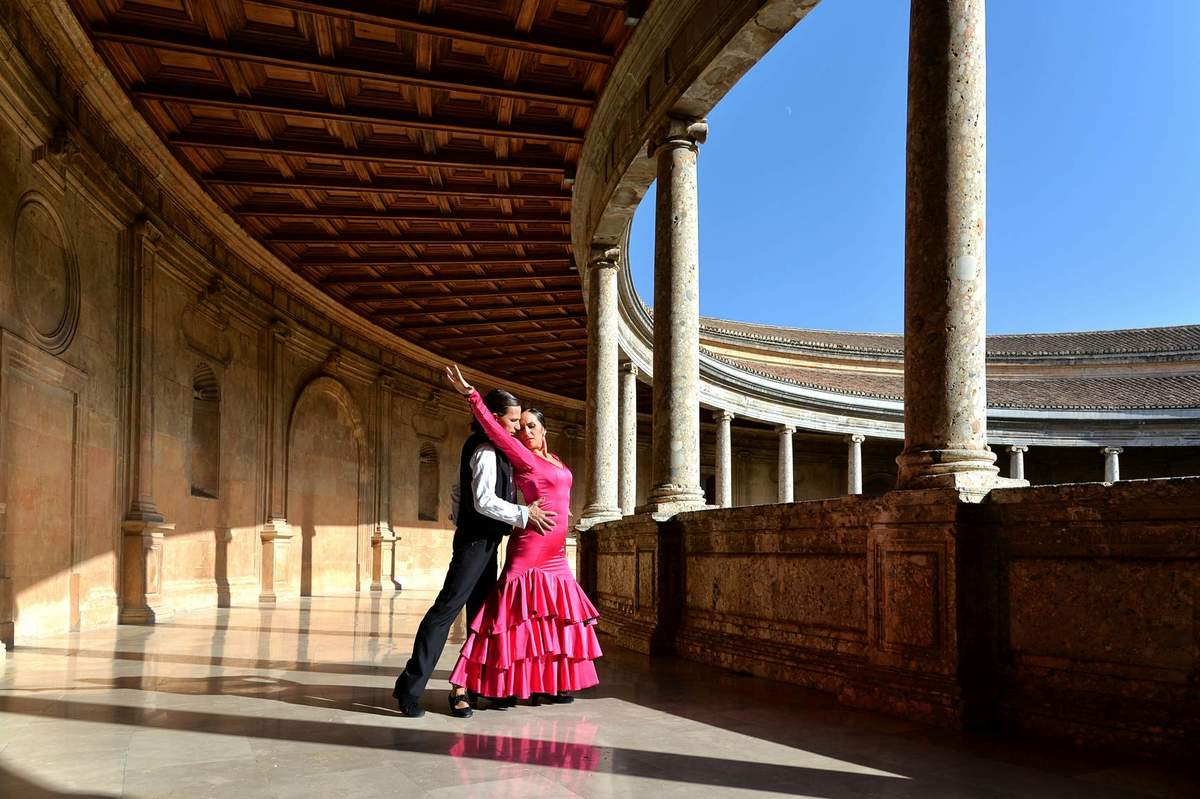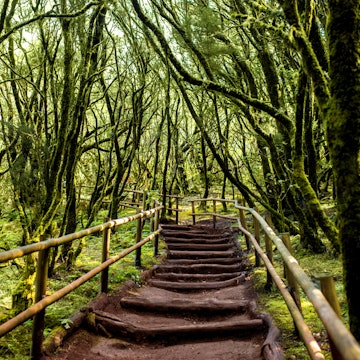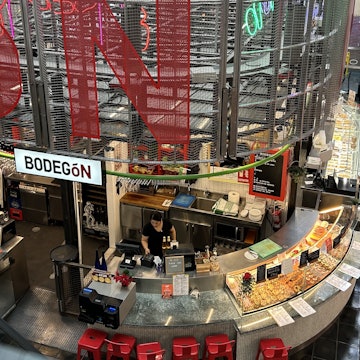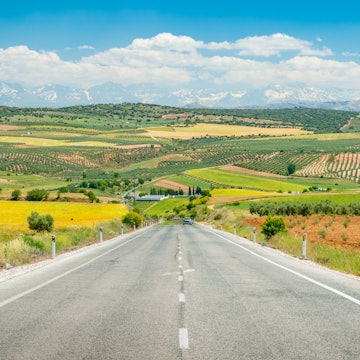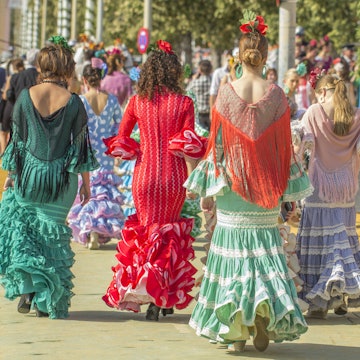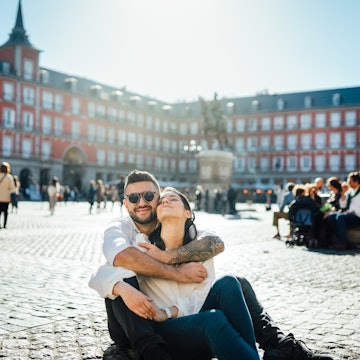
Madrid's best neighborhoods: find the perfect base for your trip

Feb 11, 2025 • 8 min read

La Latina is a great neighborhood to base yourself, close to museums, landmarks and some of the best tapas bars in Madrid. Boris-B/Shutterstock
Take some time to explore Madrid’s sunlit barrios (neighborhoods) and you’ll quickly understand the meaning behind de Madrid al cielo (from Madrid to heaven), a common expression thrown around the city that perfectly captures the Spanish capital. With historic landmarks, an array of culinary choices, picturesque plazas and world-famous nightlife, the city holds a little piece of heaven for every traveler.
Use this neighborhood guide to uncover pockets of vibrant Spanish life throughout the city that infuses a sense of joy and play into nearly every aspect of life (even the hardworking bits). Each neighborhood has a distinct personality and niche, from top-notch shopping to beloved mom-and-pop tapas bars to quiet corners for taking in unbeatable architecture and art. Don't miss a single one.

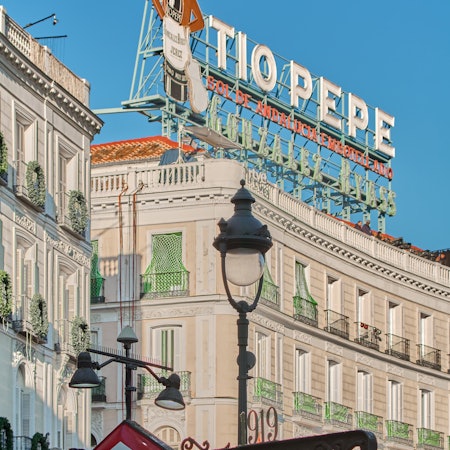
1. Sol (Centro)
Best neighborhood for sightseeing
One of the most iconic spots to visit in Madrid is its main square, la Puerta del Sol (or simply, Sol). The symbolic center of Spain and its main crossroads, Sol is a bustling plaza that has been the city’s social hub since the 19th century. In 2023, the city completed a massive renovation to the plaza, making it entirely pedestrian, blending its historic significance with its modern-day place in the city.
Sol is packed with landmarks, including the equestrian statue of King Charles III, the beloved Bear and Strawberry Tree sculpture that represents the Madrid coat of arms, and the Casa de Correos (post office). Crowning the post office is a clock, which tips off a storied Spanish tradition at the stroke of midnight on New Year's Eve, wherein revelers eat a grape for each of the clock's 12 chimes.
Ten streets radiate from Sol, making it easy to venture out to many of Madrid’s most famous nearby landmarks, such as the main boulevard of Gran Vía, Plaza Mayor, Palacio Real, Almudena Cathedral and Mercado de San Miguel. If you need to pack your Madrid sightseeing into a single day and don’t mind overpriced tourist rates, staying in Sol is a strategic decision.
Planning tip: As well as the attractions within walking distance, three Metro lines pass through Sol station (lines 1, 2 and 3), giving you easy access to many different points in the city.
2. Retiro
Best neighborhood for nature and art walks
Madrid's Retiro district is named after the Parque del Buen Retiro, a sprawling 118-hectare (291 acre) green oasis once reserved for Spanish royalty. Today, it's beloved open space for everyone in the city to enjoy and explore its stylized gardens, decorative fountains and statues, especially the famous Ángel Caído (Fallen Angel), depicting Lucifer’s fall from the heavens. Reach the park on Metro line 2 and join the countless Madrileños who love to run, rollerblade, dog walk and stroll through the park's lovely paths. Don't miss the Palacio de Cristal, a beautiful glass and iron building once used as a greenhouse and now home to art exhibitions from Museo Nacional Centro de Arte Reina Sofia.
A short walk from the park’s northwestern gates takes you to the wide, tree-lined Paseo del Prado, a UNESCO World Heritage-listed avenue featuring some of the world’s greatest art museums, primarily the Museo del Prado, home to several masterpieces by Spanish artists Francisco Goya, Diego Velázquez and Francisco Zurbarán. A stone's throw from the Prado is the Museo Thyssen-Bornemisza, which showcases nearly 1000 paintings by celebrated European and American artists from the 13th to the 20th centuries. Expect to find an eclectic mix of works from Dalí, Van Gogh, Edward Hopper, Joan Miró and Jackson Pollock, among others.
This neighborhood is a great pick if you’re visiting Madrid for the first time but have limited time, as you can visit several of the capital's emblematic landmarks with one walkabout along the Paseo del Prado, including the magnificent Palacio de Comunicaciones and Cibeles Fountain in the Plaza de la Cibeles, and the Puerta de Alcalá, the majestic neo-classical gate that towers above the Plaza de la Independencia.


3. Chueca
Best neighborhood for LGBTQI+ visitors
Out-and-proud Chueca is Madrid’s rainbow flag-draped neighborhood that never sleeps. This is the main playground of the city’s famous Día del Orgullo de Gays, Lesbianas y Transexuales, the Pride festival that kicks off the summer season every year. LGBTQI-friendly accommodations and stylish boutique hotels abound, such as the kitschy Room Mate Oscar, known for its rooftop terrace that offers panoramic views of Madrid. At any time of day, Plaza de Chueca is a great place to lounge and people-watch in its many outdoor terraces and cafés.
Planning tip: Reach the Chueca stop on Metro line 5.
4. Malasaña
Best neighborhood for nightlife
Colorful, offbeat and graffiti-covered, Malasaña was the beating heart of Madrid’s counterculture and artistic movement in the 1980s, after the end of the Franco dictatorship. That rebellious energy lingers on today in Malasaña's labyrinthine streets, which are dotted with whimsical cafés, restaurants and vintage shops. At night, its myriad bars and clubs open their doors, spin vinyl and transform Malasaña into one big street party that usually lasts until the early morning hours. A few to try: Bad Company 1920 is a cool speakeasy with cocktails locals love; 1862 Dry Bar is housed in a chic space from cool, cocktail nerd owner Alberto Martinez; Boom Boom Ciao offers an amazing atmosphere and incredible food, while Ochentagrados is an inventive and delicious fusion restaurant. To soak up the sun and mix with friendly locals, head to the outdoor terraces of the Plaza Dos de Mayo, Malasaña's central square, which commemorates the uprising of the people of Madrid against Napoleon’s occupying forces in 1808.
Planning tip: To get there, walk less than five minutes from the Bilbao Metro station (lines 4 and 1).


5. La Latina
Best neighborhood for tapas
Vestiges of Madrid’s medieval past can still be seen in La Latina, the city’s oldest quarter, which to this day has maintained its many wide public squares and narrow cobblestone streets. Crowning this historic neighborhood is the dome of the Basílica de San Francisco El Grande, home to priceless Spanish paintings including Francisco Goya's St Bernardino of Siena Preaching to Alfonso V of Aragon.
Every Sunday morning, this historic quarter hosts a 400-year-old flea market, El Rastro, which peddles every curiosity under the bright Spanish sun. It's an incredible place to people-watch and scour the aisles of vendors for one-of-a-kind finds. Hand in hand with this tradition is the requisite Sunday tapas-and-drinks crawl along the surrounding streets. One of the best is Cava Baja, which hosts some of Madrid’s oldest restaurants and watering holes. A few to try: La Posada de la Villa (housed in a former flour mill dating back to 16420), Taberna Almería (a local haunt with more seating than it appears) and La Perejila (a colorful and quirky spot for tasty tapas).
Planning tip: The La Latina Metro stop is on line 5.
6. Salamanca
Best neighborhood for luxury
Salamanca is Madrid’s wealthiest and most glamorous neighborhood. Designed in the late 19th century as an exclusive enclave of the Spanish aristocracy, it is distinguished by its grid-like streets and exquisite building facades. Today, it's a haven for luxury shopping thanks to the Golden Mile, a network of streets lined with designer fashion boutiques such as Gucci, Carolina Herrera and Loewe, as well as chic boutiques like Atelier Concept and Nac 56. In between shopping, dine and sip rioja among the chic set in elegant outdoor terraces and upmarket restaurants. Pop by the Opera Gallery, a relatively new gallery showcasing works from the best in 20th-century art. For an especially luxurious accommodation, try the Rosewood Villa Magna.
Planning tip: Reach the neighborhood via a few different Metro stops: Manuel Becerra on lines 2 and 6; Goya on lines 2 and 4; and Ventas on lines 2 and 5.


6. Lavapiés
Best neighborhood for culture
Thanks to the crucible of cultures living here, Lavapiés offers the most multicultural food choices in Madrid. The streets are lined with restaurants, cafes and tea houses offering affordable, delicious dishes from South Asia, Africa and the Middle East. (Try La Falafeleria and África Fusión.) The colorful cultures of the neighborhood’s residents play out in its arts scene too, whether in vibrant street art, pocket galleries, live music or spontaneous street dancing.
La Tabacalera is a refurbished tobacco factory transformed into a cultural center that hosts concerts, exhibitions and film festivals. The Centro de Arte Reina Sofía exhibits some of the greatest masterpieces of contemporary Spanish art, including Pablo Picasso’s iconic Guernica. Teatro Valle-Inclán is housed in a building that dates back to 1926 and has three stages of different sizes (accommodating audiences as small as 150 and as large as 500), while Teatro del Barrio, an excellent small alternative theater. Guarantee a few art-packed hours and walk Calle Doctor Fourquet, overflowing with galleries representing all mediums.
Planning tip: The Lavapies Metro station is on line 3 and not far from Sol.
8. Barrio Chamberí
Best neighborhood for immersing among locals
North of Madrid’s city center is a charming, tree-lined barrio that has become one of the most sought-after residential areas, owing to its mix of elegant architecture, family-run shops and modern establishments. This is where to go if you want a local experience away from the tourist traps, with plenty of cozy cafés, traditional markets and vibrant plazas like the family-friendly Plaza Olavide to explore. Every evening the popular Calle Ponzano becomes a lively destination for young professionals to enjoy "un after-work" before heading to eat in one of the quaint restaurants.
One cultural attraction that you cannot miss in this barrio is the Museo Sorolla, the former home of renowned Spanish artist Joaquín Sorolla. Sitting serenely amid gardens designed by Sorolla himself, the museum houses a collection of his exquisite paintings and his former studio.
Planning tip: Get there via the Moncloa Metro stop on line 3 and the Quevedo stop on line 2.





